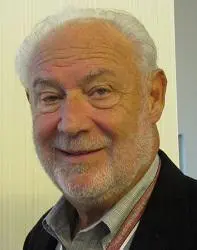International Builders Show 2019 showcased how home builders are embracing eco-friendly approaches
“Earth’s climate is now changing faster than at any point in the history of modern civilization, primarily as a result of human activities.”
This dire warning from the annual report by the United Nations’ World Meteorological Organization notwithstanding, the sustainability movement has reached a “tipping point,” according to Sara Gutterman, chief executive officer of Green Builder Media, which hosted its third annual Sustainability Symposium in Las Vegas in mid-February.
Entire countries have made bold commitments to reduce carbon emissions and adopt clean technologies. The United States isn’t one of them, but states like Hawaii and California have done the same, as have cities and companies, including a growing number of builders and building product makers.
Green energy mandates span states, cities and even small towns
California has become the first state in the country to mandate photovoltaic solar-energy panels on all new construction starting in 2020. New York City has taken a number of steps toward reducing carbon dioxide emissions, while Orlando, Fla., has become internationally known for innovative green policies and programs that improve the quality of its citizens’ lives.
Even the small town of Wellington, Fla., is doing its part to promote sustainability. Most recently, it created a 365-acre environmental preserve to act as a rainwater storage area. The area also is used to naturally cleanse storm water runoff of phosphorus and includes nature trails, seven dedicated learning centers and a six-story observation tower.
“We’re on a roll,” Gutterman said in kicking off the symposium, adding that a “paradigm shift” is finally taking place. “We’re now transforming incremental change into exponential results.”
Green new home communities, builders have arrived
To date, most new, environmentally friendly houses have been mostly one-off custom homes or demonstration houses. But these examples of what is possible if builders are willing to take the next step are now being overshadowed by entire communities of production homes.
Whisper Valley
One such place is Whisper Valley in Austin, Texas, where all 7,500 houses planned for the property will draw their energy from a giant geothermal loop system buried underground. The GeoGrid, as it is called, reduces each home’s energy consumption by 65 percent to 70 percent, cutting monthly heating costs by about 80 percent.
Coupled with solar panels and energy-efficient thermostats and appliances, the houses are net-zero capable and consistently nail a home energy rating in the teens and low 20s. By comparison, the industry standard is roughly 60.
Search new homes for sale in the Whisper Valley community on NewHomeSource.com now!
Thrive Home Builders
Outside of Denver, Colo., Thrive Home Builders is erecting an entire neighborhood of LEED certified houses powered largely by the sun. The airtight houses are net-zero, meaning they use less energy than they generate. They come with high-efficiency windows and double two-by-four 9.5-inch thick walls.
KB Home
Meanwhile, KB Home, one of the county’s largest builders, is going all out with its models. Each one is now energy certified with Energy Star appliances, radiant barriers, high R-value insulation and water-sense bathroom fixtures. Taken all together, these and other features promise to cut homeowners’ energy bills by $1,200 to $2,400 annually.
And that’s not all. In the future, KB Home’s goal is to go over and above smart homes by building “thinking homes” in which their owners don’t have to do anything but enjoy their comfort and savings.
“Building professionals are delivering high performance, healthy structures at price parity,” Gutterman said. “Product manufacturers are embracing innovation and developing green products. And regulators are making sustainability a baseline.”
Now it’s time to get consumers on board
While some new home builders embrace sustainability, consumers, for the most part, are still not on board. According to the latest research from the National Association of Home Builders, which held its annual convention and monster trade show in Vegas the same week, the majority of people want sustainable features but only if they don’t have to pay extra for them.
Then there’s abject indifference. Half the 4,000 recent and expected home buyers polled by the NAHB said they not only wouldn’t pay for energy efficiency, indoor air quality and the like, they just don’t give a hoot about them, period.
Perhaps that’s why Academy Award-winning actor Jeff Bridges, aka “The Dude” in the cult comedy “The Big Lebowski,” maintains it is up to the believers to lead the nonbelievers to the promised land. “We have to take care of each other,” he said in opening the sustainability conference, which took place on the campus of the University of Nevada, Las Vegas.
“Together, we can turn the ship,” Bridges told the crowd. “We all have something to give. What we do now will determine our future.”
Keynote speaker Wesley K. Clark, the retired four-star Army general, went further, saying the way to heal the partisan divide in Washington is to “educate, inform and engage the electorate.
“Speaking out makes a huge difference,” said Clark, who has dabbled in the energy sector since his retirement. “Sustainability is not a cost; it’s an opportunity. But we have to fight for it.”
He called on the assembly to return home and do two things: Energize young people who are passionate about their beliefs and make it so voters don’t care about anything else but global warming.
“If you can reduce the vote to a single issue, it will carry the day,” he said. “Create a need for action. Not any particular action, just action. Deciding what that action should be will come next.”

Lew Sichelman is a nationally syndicated housing and real estate columnist. He has covered the real estate beat for more than 50 years.
